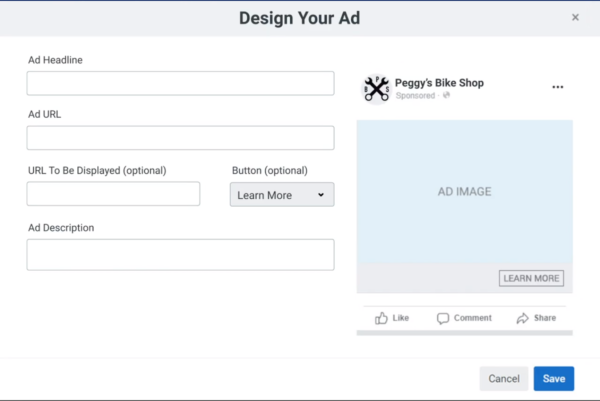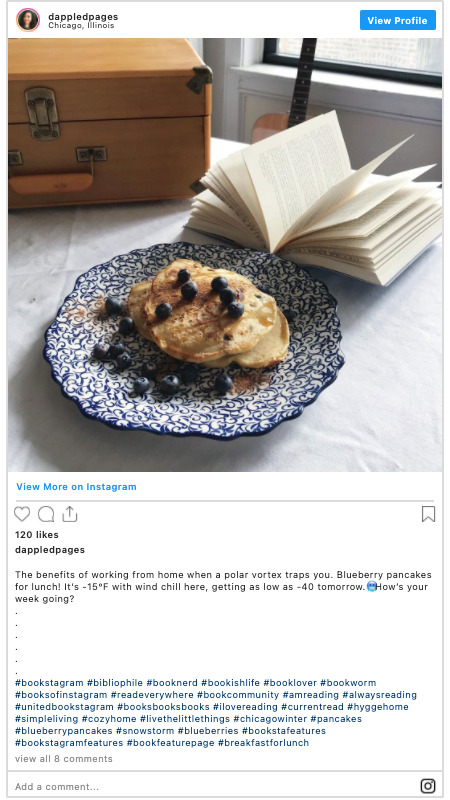Writer marketing gurus all emphasize how important it is to stay connected with audiences. The market is becoming increasingly competitive for all kinds of writers, and stable jobs are getting fewer and farther between. In order to succeed in this market, writers need to implement a social media strategy to help them stand out.

Between writing and publishing your work, you can easily start to feel like you have two full-time jobs. Wouldn’t it be nice to be one of those writers whose work promotes itself?
Enter social media. Did you know that 72% of American adults are on at least one social media platform? Up to three-quarters of people online visit social platforms every day. Whoever your audience is, that’s where you can find them.
In this article, you’ll learn:
- Why is social media important for writers?
- What platforms should you be posting on?
- Starting on Facebook
- Using visual content on Instagram
- Reaching young audiences on Snapchat
- Networking on LinkedIn
- What’s next?
We make it easy to get your work out to your network and beyond with all the marketing tools you need.
Why is social media important for writers?
Writing is all about connecting with people. Whether you’re a copywriter creating email promotions or a self-published author with a new mystery novel, your goal is always to find people who want to read or share your work.
How do you find potential readers and followers online?
To find those people, you need to get your name and work out there. Experienced writers will tell you that a portfolio website is the best place to start. A portfolio lets you share examples of your work and entices potential readers or clients to contact you.
Your website is your home base on the internet, and social media is how you draw people to that home base.
What platforms should you be posting on?
The thought of keeping up a multi-platform strategy can scare a lot of wordsmiths away, especially when they’re new to social media for writers.
For now, pick one platform and establish a presence. Reserve your name on some of the others so it’s there when you need it but focus on your primary channel. Which one you use depends on your readership or client base.
Starting on Facebook
Facebook is a great option if you’re new to social media for writers. It’s the world’s most popular social media platform and has a significant user base across all age groups, including more than 75% of all Americans ages 18 to 50.
Multiple social features
Besides its broad reach, the most useful aspect of Facebook for most writers is its versatility. Facebook lets you post photos, videos, text announcements, and more. You can:
- Post links to articles you’ve published
- Share videos of interviews
- Upload cover art images
- Join groups where people discuss subjects that you write about
Facebook ads
If you want to use Facebook to get your name and work in front of new audiences, ads are the way to go.
Facebook ads let you choose your audiences. For example, if you’re a freelance content writer with a finance niche, you can choose to show your ad to people who are interested in finance. You can even target certain job titles, like content manager or editor, so your ads get in front of people who could hire you.
Writing poetry? You can choose “poetry” as an interest. Publishing a sci-fi epic? You can target that niche, too. Don’t worry if you’ve never created Facebook ads before — Constant Contact makes it easy with user-friendly Facebook Ad tools.

You might find that running Facebook lead ads is the best way to encourage a reader to connect with you. Use a Facebook lead ad to urge people to join your mailing list or redeem an offer. It’s great for book giveaways or invitations to events.
Using visual content on Instagram
For writers of books, Instagram is becoming one of the hottest places to be. You can thank the hashtag #bookstagram, which connects readers that talk about books and celebrate their love of all things literary.
The engaging power of a hashtag
Posts usually feature staged photos of books, but the buzz these posts generate is real and can be powerful for authors. According to bookstagrammer Hailey Dezort, “You might think of reviews in the New York Times Book Review or New Yorker, but the people I really trust are on bookstagram.”

How to use #bookstagram as a writer
You don’t have to film and post videos to be on Instagram. A bookstagram account can be a great way to promote yourself, whether you’re trying to publicize a novel or your latest essay on Medium.
Start by cultivating a following with authentic, engaging posts. You could:
- Post photos of your latest read and ask people what they’re reading
- Share pictures of your favorite bookstore and ask what indie stores your readers love
- Run an Instagram photo challenge and ask people to share their “shelfies” — photos of their bookshelves at home
Once you have a following, introduce your work as a writer. Ask people to follow you on Patreon, share your latest article or blog post, and so on. Let your circle do the work of spreading the word.
Reaching young audiences on Snapchat
If you write for young adult or middle-grade audiences, Snapchat is a platform to consider. It’s the favorite of 44% of American teens, making it the most popular platform among that age group — although Instagram is a close second.
One of the best uses of Snapchat for literature has been Harper Collins’s screen adaptation of the YA series The Dead Girls Detective Agency for Snapchat. The episodes are only five minutes long, and you can check them out on YouTube, too.
You don’t have to create a polished professional production like this one. Try a photo of your writing space or a video testimonial from a young reader.
Networking on LinkedIn
LinkedIn is a useful platform for business writers and freelancers-for-hire. Its users tend to be more educated and higher-income. People on LinkedIn include 49% of people with incomes $75,000 and higher, as well as 51% of those with college degrees.
For freelancers, LinkedIn is a great way to connect with potential gigs. Start by completing your profile with what you write and what your niche topics are. Contact people you’ve written for before and ask for testimonials.
There are also tons of job ads on LinkedIn. These ads are great resources even if you’re not looking for full-time work. Companies that need full-time writers usually need someone to fill in the gaps.
Writers of all varieties can benefit from membership in LinkedIn groups. Some, like Writers & Authors, are more for craft development and critique. Others, like The Freelance Writers’ Connection, will help you network. There are hundreds of groups for writers of all levels and types.
After working on social media for writers, what’s next?
By now, you’ve looked at how you can use Facebook, Instagram, Snapchat, and LinkedIn to connect with audiences.
For more inspiration, plus ideas on how to connect it with other elements of your online marketing, check out Constant Contact’s The Download. It’s a comprehensive guide to digital marketing for independent authors and writers — and it includes social media as well as website, blog, and Amazon-based strategies.
Remember: Social media success is all about knowing your audience, and as a writer, you’ve already got that down.




